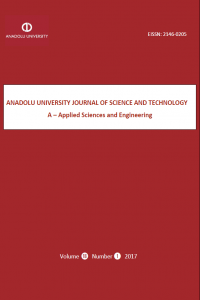Abstract
Current design approach for seismic isolated structures is to perform bounding analyses. These analyses provide an envelope for the response of the seismic isolated structure rather than focusing on the actual performance. In this study, the success of bounding analyses to estimate performance of a seismic isolated structure, in which the isolation is provided by means of lead rubber bearings (LRBs), is evaluated in a comparative manner. For this purpose, nonlinear response history analyses were performed under the effect of bidirectional ground motion excitations. In bounding analyses, non-deteriorating hysteretic representations were used to model the hysteretic behavior of LRBs. On the other hand, to estimate the actual performance of both the superstructure and isolator units, deteriorating hysteretic idealizations were employed. The deterioration in strength of LRBs was defined as a function of temperature rise in the lead core. The analyzed structure is an existing seismically isolated hospital building and analytically modeled in accordance with its reported design properties for both isolation units and superstructure. Results obtained from analyses where LRBs are idealized by both deteriorating and non-deteriorating hysteretic representations are used in the comparisons. The response quantities used in the comparisons are maximum isolator displacement, maximum isolator force, maximum absolute floor acceleration, and maximum relative story displacements. In an average sense, bounding analyses is found to provide conservative estimates for the selected response quantities and fulfills its intended purpose. However, it is revealed that there may be individual cases where bounding analyses fails to provide a safe envelope.
Abstract
Details
| Subjects | Engineering |
|---|---|
| Journal Section | Articles |
| Authors | |
| Publication Date | March 31, 2017 |
| Published in Issue | Year 2017 Volume: 18 Issue: 1 |

